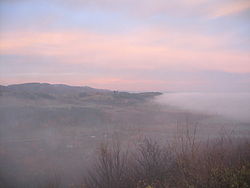
Wernigerode is a town in the district of Harz, Saxony-Anhalt, Germany. Until 2007, it was the capital of the district of Wernigerode. Its population was 32,181 in 2020.
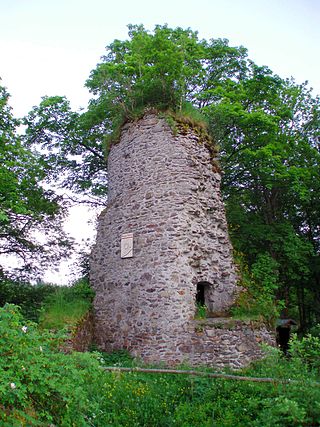
The Königsburg is a ruined medieval castle southeast of Königshütte, a village in the borough of Oberharz am Brocken, in Harz district in the German state of Saxony-Anhalt.

The Harzburg, also called Große Harzburg, is a former imperial castle, situated on the northwestern edge of the Harz mountain range overlooking the spa resort of Bad Harzburg in Goslar District in the state of Lower Saxony, Germany. It was erected from 1065 to 1068 at the behest of King Henry IV of Germany, slighted during the Saxon Rebellion in 1073-75, and a century later rebuilt under Emperor Frederick Barbarossa and his Welf successor Otto IV, who died here in 1218.

Blankenburg (Harz) is a town and health resort in the district of Harz in Saxony-Anhalt, Germany, at the north foot of the Harz Mountains, 12 miles (19 km) southwest of Halberstadt.

Derenburg is a town in the district of Harz, in Saxony-Anhalt, Germany. Since 1 January 2010, it has been part of the Blankenburg am Harz municipality. Its population is 2,466 (2021).

Heimburg is a village and a former municipality in the district of Harz, in Saxony-Anhalt, Germany.
The County of Regenstein was a mediaeval statelet of the Holy Roman Empire. It was ruled by the Saxon comital House of Regenstein, named after their residence at Regenstein Castle near Blankenburg north of the Harz mountain range.

Anhalt Castle is a ruined medieval fortification near the town of Harzgerode in Saxony-Anhalt, Germany.

Falkenstein Castle, also formerly called New Falkenstein Castle to distinguish it from Old Falkenstein Castle, is a German hill castle in the Harz Mittelgebirge, dating to the High Middle Ages. It is located in the town of Falkenstein between Aschersleben and Harzgerode.
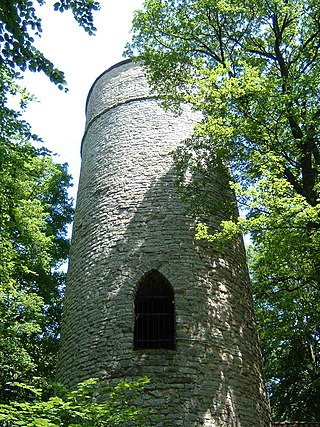
Grubenhagen Castle is a ruined medieval castle in North Germany dating to the 13th century. It is not far from the town of Einbeck in southern Lower Saxony.

Hessen, also Hessen am Fallstein, is a village in the Harz district of Saxony-Anhalt, Germany. Formerly part of the Aue-Fallstein municipal association, it was merged into the Osterwieck municipality on 1 January 2010.

Regenstein Castle is a ruined castle that lies three kilometres north of Blankenburg in the German state of Saxony-Anhalt. It is a popular tourist destination where, each year, a knight's tournament and a garrison festival are held.

Great Blankenburg Castle was built on the limestone hill of Blankenstein in the town of Blankenburg in the district of Harz in the German state of Saxony-Anhalt. Nearby is the Little Castle with its Baroque garden, tea house and museum, the town wall, the pheasant garden, the castle park and the castle pond.

the Regenstein family, also Reinstein, was a Lower Saxon noble family, which was named after the eponymous Regenstein Castle near Blankenburg on the edge of the Harz Mountains of central Germany.
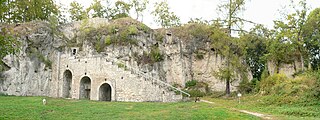
Scharzfels Castle is the medieval ruin of a fortification located east of the village of Scharzfeld in the borough of Herzberg am Harz in central Germany. It lies in a wood on a ridge about 150 m above the Oder valley. For centuries after its construction in the 10th or 11th century it remained an impregnable fortress. The inner ward is built on a dolomite rock outcrop about 20 m high. The castle was first captured after a siege in 1761 during the Seven Years' War and then blown up.
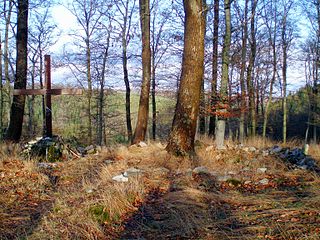
Bodfeld was a small royal palace or lodge that was primarily established for hunting purposes and, when the town of Elbingerode emerged, for the administration of ore mining in the central Harz that underpinned the power of the Ottonian and Salian kings and emperors in medieval Europe. The term Bodfeld is also used to describe an area of forest that lies predominantly south of Elbingerode.
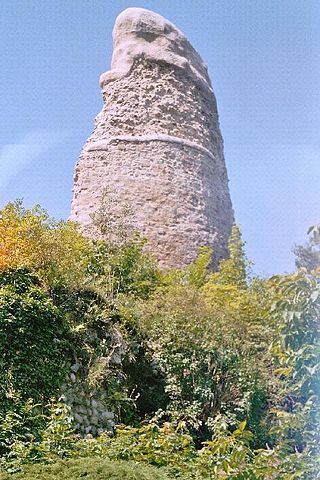
The Alte Burg is a ruined spur castle that only comprises half a bergfried and is located in the Lower Saxon district of Osterode in the Harz Mountains of central Germany. The name means "Old Castle".

The Struvenburg was a medieval castle immediately east of Benzingerode, a village in the borough of Wernigerode in the district of Harz in the German state of Saxony-Anhalt. Today only a few earthworks remain. Very little is known about this castle. The name may be derived from the adjective struf = scrubby or rough.
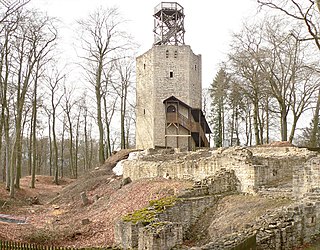
Lichtenberg Castle, also called the Heinrichsburg, is a ruined castle dating to the 12th century in the Lichtenberge hills near Salzgitter in the German state of Lower Saxony. The ruins are found south of and above the Salzgitter suburb of Lichtenberg on the steep summit of the Burgberg.

Old Falkenstein Castle in the Harz Mountains of Germany is the castle site or burgstall of a high medieval hill castle. It lies on the territory of Falkenstein/Harz in the state of Saxony-Anhalt in the district of Harz. It was built in the 11th century A.D. and destroyed in 1115.
